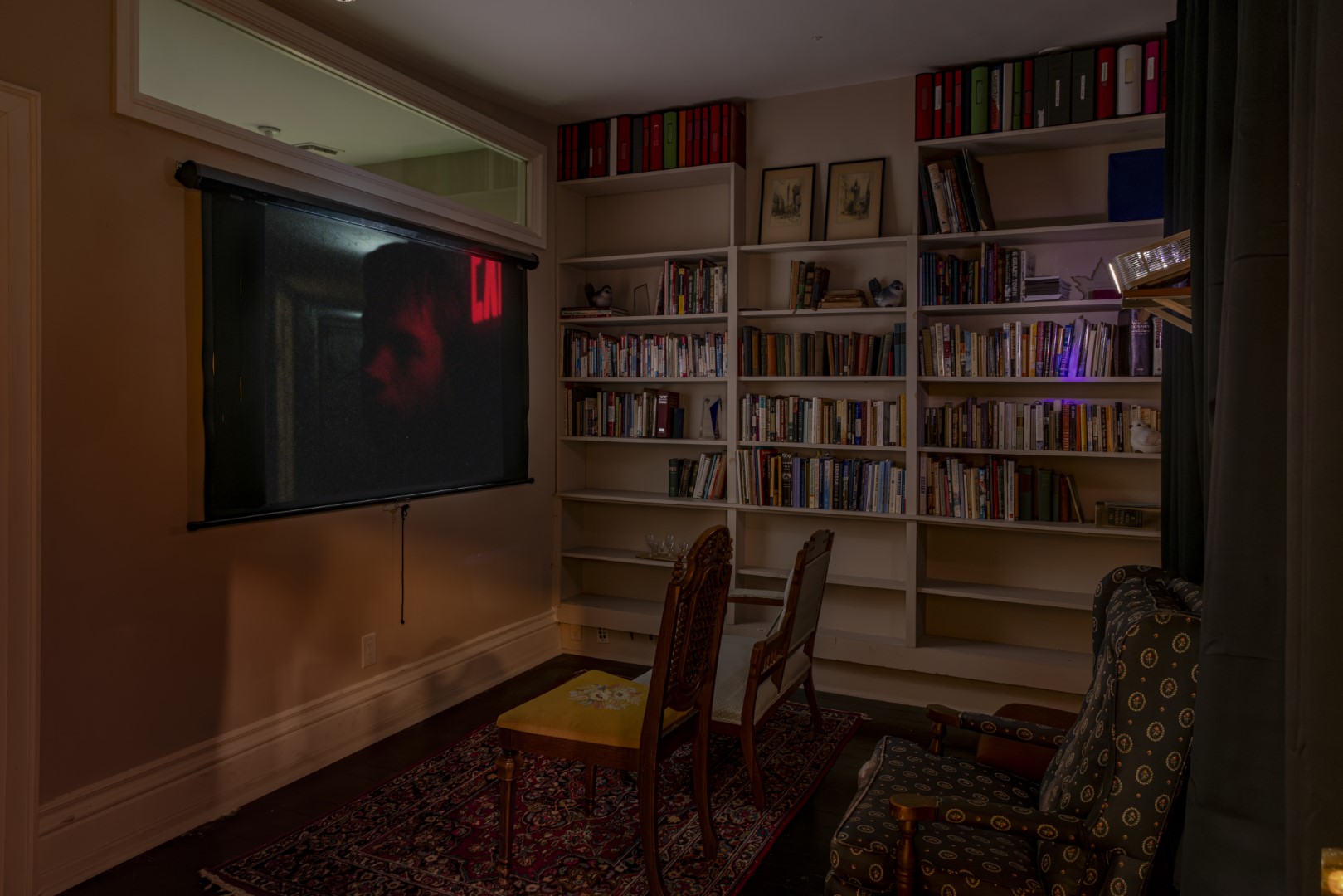Bio
“My name is Gillian Stam and I am a multimedia artist specializing in film and illustration. Themes I like to explore in my work include the nature of memory and storytelling, the blurring between dreams and reality, and the manifestation of the uncanny in the mind and body. A goal of mine has always been to create a dialogue with the viewer, encouraging them to use their own experiences as a lens to interpret my work.”
Artist Statment
The Over-Scene documents the loss of subculture, and the feelings of disconnection and alienation that result in individuals searching for community and mutual understanding. The film captures some of Toronto’s hidden venues, many of which contain remnants of past subcultural activity but are now devoid of life and social collectivity, inhabited instead by a pronounced absence.
The subjects—close friends of the artist with shared experiences of the city’s waning subcultural landscape—are shown navigating places that no longer resonate with the complexity of contemporary “scenes,” emphasizing the relational gaps in 21st-century youth culture. Captured on Super 8 film transferred to video, these spaces take on a surreal quality, reflecting their contextual ambiguity.
The narrator’s voice, which guides the viewer through the hazy corridors and darkened streets of Toronto’s underground, meditates on the nature of place, and the anxieties of the current generation as they negotiate with ideas of subculture rooted in a mythologized past—ghosts in a machine that refuses to accommodate them.rfe8
The film’s form is directly inspired by the work of queer and feminist No Wave filmmakers of the 1970s and 1980s, whose films serve as time capsules, capturing the social attitudes and dynamics of a specific era and place. By referencing this movement, The Over-Scene creates a dialogue between two points in history, illustrating the duality of longing for a unified subcultural community—often influenced by commemorations of the past—while simultaneously striving to forge one’s own identity and sense of place in today’s world.
Sophie Woelfling is an artist exploring language and writing as tools of communication/ deliverers of understanding—specifically when these tools/deliverers fail to fulfill their design—creating confusion rather than comprehension.
A hand two hundred times more agile makes use of discernibly writing-like forms, but does away with any legible semantic content, creating an experience of simultaneous recognition/unrecognition: a deceptive appearance of decipherability. Page-like panels of linen reference the conventional holders of writing, but deviate materially. Scripts and symbols present themselves as such, but refuse to be read—calling the inability to comprehend into investigation.
The starting point for this project was the artist’s personal relationship with these tools of communication. Language fails. It’s a sieve we sift our formless experience through, into which not all fits. This deficiency renders things stuck: incommunicable—sometimes lost. Some things are untranslatable. Some things are impossible to grasp in the first place, much less to mold into words. These iterative works represent that which resists being made sense of—what comes and goes too quickly to identify, is too microscopic to access, or too large to conceive of all at once.
The title is derived from Henri Michaux’s Thousand Times Broken:“A hand two hundred times more agile than the human hand would not suffice for the task of following the accelerated course of the inexhaustible spectacle. And it is out of the question to do more than follow. Here one cannot seize a thought, a term, or a figure, to work with it, to draw inspiration from it, or to improvise on it. All power over them is lost. Their speed, their independence, comes at that price.”






